The Rains Came

Brief Synopsis
Cast & Crew
Clarence Brown
Myrna Loy
Tyrone Power
George Brent
Brenda Joyce
Nigel Bruce
Film Details
Technical Specs

Synopsis
Tom Ransome, a devil-may-care philanderer, has spent the last several years in India, embellishing his reputation and watching the rains come and go. Tom's reputation fascinates Fern Simon, the innocent young daughter of American missionaries, but Tom thinks of Fern as a young girl. During a party held at the Maharajah's palace, Tom is reunited with an old flame who is now Lady Edwina Esketh, having married the wealthy but borish Lord Esketh. Tom sees his own shallowness reflected in Edwina, and becomes alarmed when she decides to make a conquest of his friend, Major Rama Safti. However, the major's commitment to his work as a doctor makes him immune to Edwina's charms. Meanwhile, as the coming of the rains abates the heat, Tom begins to fall in love with Fern. Then, one night, disaster strikes the state of Ranchipur when an earthquake destroys the dams and releases flood waters that smash everything in their path. Lord Esketh perishes in the disaster, as does the Maharajah. The courageous Maharani then presses Tom into service as her aide-de-camp, and he asks Fern to join him. As a plague sweeps the city, the major fights valiantly to contain it, and Edwina volunteers to help in the hospital. Her selflessness causes the major to fall in love with her, but when she becomes a victim of the plague, he is unable to save her. The major finally vanquishes the plague, and as Tom and Fern are married, he ascends to the position of Maharajah of the rebuilt state, but faces a lonely future before him.

Director

Clarence Brown
Cast

Myrna Loy

Tyrone Power
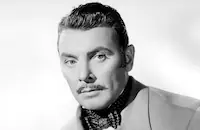
George Brent

Brenda Joyce
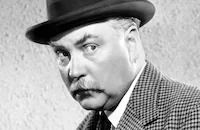
Nigel Bruce

Maria Ouspenskaya
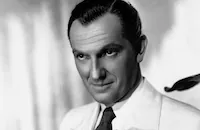
Joseph Schildkraut

Mary Nash
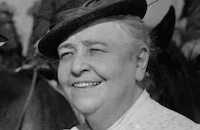
Jane Darwell

Marjorie Rambeau

Henry Travers

H. B. Warner

Laura Hope Crews
William Royle
Montague Shaw
Harry Hayden
Herbert Evans
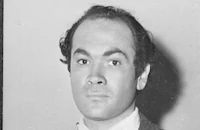
Abner Biberman
Mara Alexander
William Edmunds
Adele Labansat
Sonia Charsky
Rita Page
Rosina Galli
Connie Leon
Pedro Regas
Frank Lackteen
George Regas
Leyland Hodgson

Fern Emmett
Guy D'ennery
Jamiel Hasson
Lal Chand Mehra
Crew
Otto Brower
Harry Joe Brown
Alfred Bruzlin
William Darling
George Dudley
Philip Dunne
Bert Glennon
Mack Gordon
Sol Halprin
Roger Heman
Julien Josephson
Thomas Little
Booth Mccracken
Barbara Mclean
Lal Chand Mehra
Arthur Miller
Alfred Newman
Major George Remington
Harry Revel
Fred Sersen
Gwen Wakeling
Charles Whittaker
Darryl F. Zanuck

Videos
Movie Clip



Trailer
Hosted Intro
Film Details
Technical Specs

Award Wins
Best Special Effects
Award Nominations
Best Art Direction
Best Cinematography
Best Editing
Best Score
Best Sound
Articles
The Rains Came
It's Power's show all the way, however, as he is costumed stunningly in outfits ranging from turbans and satins to military uniforms and hospital whites. Power's most significant co-star here is probably the special effects, which won the first-ever Oscar® in that category. The picture was also nominated for five further Academy Awards: Art Direction, Black-and-White Cinematography, Film Editing, Sound, and Musical Score.
Myrna Loy later recounted her experience on The Rains Came, specifically some friction with studio chief Darryl Zanuck. Zanuck had fired her from Warner Brothers ten years earlier, saying at the time, "We can't afford you. There aren't enough wenches for you to play." Loy later signed a contract with MGM, and when Zanuck got her on loanout for The Rains Came after every top actress in town had campaigned for the part, Loy was surprised.
Once filming began, she later wrote, Zanuck began to pester her with criticisms. He called her into his office one day and berated her performance but did not offer any specifics. "Well, what do you want me to do?" Loy asked. Zanuck replied, "Show up for work." "That was it," Loy recalled. "He never made any sense, really." The episode made Loy insecure enough to check with Clarence Brown and The Rains Came novelist Louis Bromfield about her performance. Both told her she was fine. Bromfield even said, "I think you're giving the best performance of your career."
"I'll never know why Darryl took things out on me," Loy mused. "Perhaps he wanted to justify the fact that he'd fired me from Warners and I'd become a big success."
Overall, though, Loy described The Rains Came as "a happy film." She loved working with Maria Ouspenskaya and Nigel Bruce ("a darling man we called 'Bunny'"), and she had a good working relationship with director Brown. "He had a deft hand, and I had a lot of confidence in him. 'You know, people don't die with their eyes closed,' Clarence suggested during my death scene. 'Why don't you try dying with your eyes open? You've just got to hold your breath.' I held my breath, staring at some fixed object until I began to see stars and everything started to blur and run together. I was turning a little blue when he finally called 'Cut!' When you trust a director, you'll do anything for him."
Of Tyrone Power, Loy said, "[he] was one of the nicest human beings I've ever known, a really divine man, perceptive and thoughtful... I'm sorry to report that we weren't lovers, but close to it. I loved him, but he was married to that damn Frenchwoman [Annabella]... He had a very strong sense of other people, heightened by a kind of mysticism, a spiritual quality. You saw it in his deep, warm eyes." One day, Loy recalled, Power told her that if he could be anything, he would be "the wind, so I could be light and free and be anywhere I want at any time. I could go all around the world and look in people's windows and share their joys and sorrows."
Cinematographer Arthur Miller had plenty of fascinating recollections about The Rains Came, too. He was asked to replace Bert Glennon early in production because Glennon was not lighting the sets the way Brown wanted. For a grand dinner-party scene, for instance, Brown wanted the furniture and décor to shine, "and Glennon had made it shadowy and soft." Miller got the brilliant, shiny look Brown was after by spraying the tables and other furniture with oil, and having the silverware polished over and over until everything glistened. "When the old Maharajah died and the veil over the bed blew a little in the wind, I made the whole scene glow as vividly as possible, to suggest a spiritual, transcendent quality."
Miller had photographed Myrna Loy once before, on The Truth About Youth (1930), and he knew some of her tics. He described one exchange which says much about how stars of the time tried to control the technical aspects of their on-screen appearance: "She asked me before we did the test to have a matchbox light with a red gelatin on it shine in her eyes with fifteen candle power. I thought, 'What the hell was the use of that when I already had hundreds of watts shining on her anyway?' And I asked her what she wanted it for. And she said, 'It makes my eyes dark.' Crazy, of course, but I jiggled it around for her and whether she had the light and the gelatin on it or not didn't make any difference! It was all hokum; stars get that way. Luckily, she accepted my point that the light she wanted had no sense, and from then on we got along O.K.
"But oddly enough, I did use the red gelatin once. It's when she takes a drink in the hospital and you know she's become infected with a disease and her face fills with shadows. I just wanted a special kind of look in her face, as though death is coming over her and she doesn't know it. And the gelatin was wonderful for that."
Miller continued: "I became obsessed with rain on that picture; I was always amazed when I left the studio that it wasn't raining. I hate movie rain that falls straight down, and I know that rain never does; it always falls at an angle. I made the prop department adjust the spouts accordingly. I even shot the raindrops so they seemed much larger. You never saw such water in your life! Brent and the others took a hell of a beating on the picture. There was one scene when Nigel Bruce and his manservant were on the landing of their house and the water rushed in and 'drowned' them in one shot, without a cut. And in fact the actors actually took the full force of that, and even had bits of the set flying on to them! They risked their lives, even though the material was balsawood; if it had hit them the wrong way it would have killed them instantly...
"One trouble with the way they handle rain today...is that they don't backlight it. You have to backlight rain or you don't see it; it's just a blur. And all the way in my picture the rain shines; it was the theme of the film."
The Rains Came was well-received, though as Variety said, "the tropical earthquake that well nigh wrecks the mythical domain of Ranchipur is more Zanuck than Bromfield. But it is good cinematurgy.... The simple heroics following the quake are more effective than the earth-rending sequences themselves."
Making her screen debut in The Rains Came is Brenda Joyce. The 17-year-old, whose real name was Betty Leabo, had been discovered by Fox in a fashion magazine. Her last name was changed to "Joyce" after Alice Joyce, the famous silent screen star who at this time was married to Clarence Brown! Joyce received good notices for this film, but her career would be brief. She went on most famously to replace Maureen O'Sullivan in the Tarzan series, playing "Jane" in five films, but she retired after the last of these (Tarzan's Magic Fountain [1949]), got married and settled into a life of anonymity.
The Rains Came was remade in 1955 as The Rains of Ranchipur, starring Lana Turner and Richard Burton.
Producer: Darryl F. Zanuck
Director: Clarence Brown
Screenplay: Philip Dunne, Julien Josephson; Louis Bromfield (novel)
Cinematography: Arthur Miller; Bert Glennon (uncredited)
Art Direction: William Darling, George Dudley
Music: Alfred Newman
Film Editing: Barbara McLean
Cast: Myrna Loy (Lady Edwina Esketh), Tyrone Power (Major Rama Safti), George Brent (Tom Ransome), Brenda Joyce (Fern Simon), Nigel Bruce (Lord Albert Esketh), Maria Ouspenskaya (Maharani), Joseph Schildkraut (Mr. Bannerjee), Mary Nash (Miss MacDaid), Jane Darwell (Aunt Phoebe, Mrs. Smiley), Marjorie Rambeau (Mrs. Simon), Henry Travers (Rev. Homer Smiley), H.B. Warner (Maharajah).
BW-103m.
by Jeremy Arnold
SOURCES:
Charles Higham, Hollywood Cameramen
James Kotsilibas-Davis and Myrna Loy, Myrna Loy: Being and Becoming

The Rains Came
The Rains Came on DVD
Ransome is saved from his initial encounter with Fern when he receives a summons to the palace of the Maharajah (H.B. Warner) and Maharini (Maria Ouspenskaya) to honor the arrival of British nobleman Lord Albert Esketh (Nigel Bruce) and his young wife, Lady Edwina Eskweth (Myrna Loy). Edwina is a woman with a checkered past, whose conquests included Ransome, and who married the much older Eskweth for his money. But marriage has not put a damper on her activities, and the moment she arrives in town, Edwina makes a play for young, dashing Indian doctor Major Rama Safti (Tyrone Power), who is next in line to the throne. When the Eskweth's departure from Ranchipur is delayed due to the Lord's illness, Edwina is given the time she needs to entice Safti.
But the significance of the romantic peccadilloes of the upper-classes is literally washed away when the rain that the Indians have been praying for to end their drought finally comes—but won't stop. As the monsoon continues to unrelentingly lash away at the city, the townspeople are struck by an even worse disaster: a devastating earthquake that virtually destroys the city, and fractures the local dam, sending a flood to wipe away was is left of the rubble. In the wake of the disaster, as the citizens try to cope with the loss, plague from bacteria infested water begins to spread. In the face of the catastrophe and its aftermath, the characters must face extraordinary challenges that will change each of their lives: Ransome seems to effortlessly drift from his profligate ways as he is called upon to help in the distribution of supplies, and the young Fern copes her new role as his assistant. But the biggest trial is in store for Edwina, whose love for Safti prompts her to volunteer at his hospital, and constantly dealing with the plague victims slowly strips away her upper-crust defenses.
The Rains Came is a lavishly produced tale of redemption through disaster, given an unfortunate timeliness with its release coming on the heels of Hurricane Katrina. The film's first half, before the storm finally hits, is surprisingly frank and knowing in its depiction of the glossy sordidness of the country's social elite, and serves as another example of how gifted writers, directors and actors could sidestep the Production Code and convey their meaning in a way that is forthright without being graphic: for example, the scene in which Brent lights a cigarette for Loy is darn near pornographic, without anything to which the Hayes Office could object. The final third of the film flags a bit, losing some of its momentum as the characters attempt to pick up their lives; but it's hard to imagine how the film could have successfully regained itself after the startlingly realized storm sequence.
The film is most notable for the Oscar-winning special effects, which remain awe inspiring even today, and producer Darryl F. Zanuck's and director Clarence Brown's inspired casting against type, which provides some fascinating performances. Power does nothing but turn down the wattage of his trademark charisma to convey the role of the Indian doctor, and comes across splendidly in the role. Loy, who had been type cast as the "bad girl" in many films in her early career before she broke the mold with her performance as Nora Charles in The Thin Man and After the Thin Man, returns to her roots with a character who is more three-dimensionally wicked. It is great fun to see Nigel Bruce in a part so completely different from his signature role as the bumbling Doctor Watson in the Sherlock Holmes films. Bruce is thoroughly believable as the jealous, demanding Lord Eskweth, and Maria Ouspenskaya gives a perfectly eye-opening performance as the Maharini. The cast is rounded out by an incredible roster of great character actors, including Henry Travers, Jane Darwell, Joseph Schildkraut, and Mary Nash (The Philadelphia Story).
The new Studio Classics edition of the film from Fox has been transfers from source elements that are in surprisingly good condition, through there is a little debris and general wear, and one spot where there is some brief but very noticeable damage, with the image going badly in and out of focus. The audio is also showing some signs of deterioration, though generally it's very good, with very dynamic bass. Included on the disc is an audio commentary with film historians Anthony Slide and Robert Birchard.
For more information about The Rains Came, visit Fox Home Entertainment. To order The Rains Came, go to TCM Shopping.
by Fred Hunter
The Rains Came on DVD
Quotes
Trivia
Notes
According to news items in Hollywood Reporter, Darryl Zanuck originally planned to co-star Ronald Colman and Marlene Dietrich in this film, which was shot on location in Balboa Park, CA. Other news items in Hollywood Reporter note that the film was budgeted at $2,500,000. $500,000 was allotted for sets and $500,000 allotted for the flood and earthquake scenes. 350 grips, carpenters and other laborers worked for more than a month on these sequences. To create the effects in the flood scenes, a tank holding approximately 50,000 gallons of water was erected on a studio soundstage. Another news item in Hollywood Reporter adds that the budget was increased by $100,000 in June so that a new ending could be filmed. According to another news item in Hollywood Reporter, cameraman Arthur Miller replaced Bert Glennon in early May after Glennon became ill. Myrna Loy was borrowed from M-G-M for this picture. The picture marked Brenda Joyces screen debut. It won an Academy Award for Best Special Effects and was nominated for Best Art Direction, Best Editing, Best Musical Score and Best Sound Recording. In 1940, George Brent and Kay Francis starred in a Lux Radio Theater version of the story. The 1955 film The Rains of Ranchipur, directed by Jean Negulesco and starring Lana Turner and Richard Burton, was a remake of this film. According to a modern source, Turner was considered for the role of "Fern Simon" for the 1939 version.

Miscellaneous Notes
Released in United States 1939
Remade as "The Rains of Ranchipur" (1955) directed by Jean Negulesco.
Released in United States 1939
















